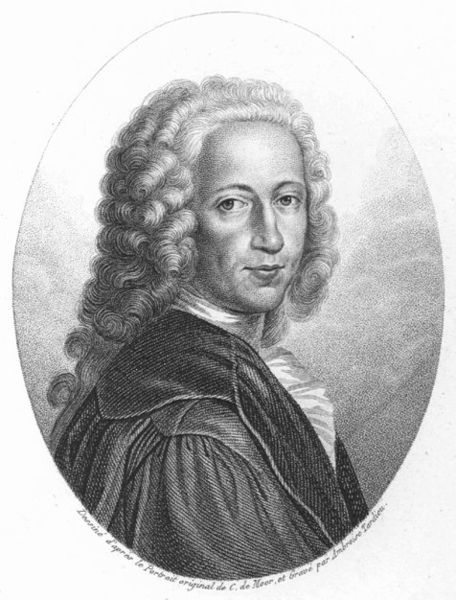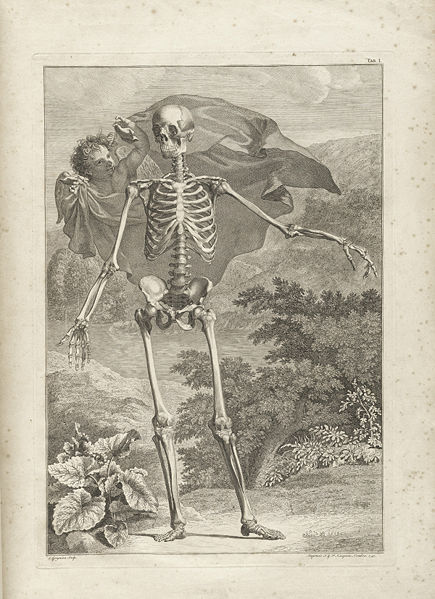<Back to Index>
- Anatomist Bernhard Siegfried Albinus, 1697
- Sculptor István Ferenczy, 1792
- 2nd President of Portugal Joaquim Teófilo Fernandes Braga, 1843
PAGE SPONSOR


Bernhard Siegfried Albinus (originally Weiss) (February 24, 1697 – September 9, 1770) was a German born Dutch anatomist.
Albinus was born at Frankfurt (Oder), where his father, Bernhard Albinus (1653 – 1721), was professor of the practice of medicine. In 1702 the latter was transferred to the chair of medicine at Leiden University, and it was there that Bernhard Siegfried began his studies in 1709, at the age of 12, having for his teachers such men as Boerhaave and Nikolaus Bidloo. Having finished his studies at Leiden, he went to Paris, where, under the instruction of Sebastien Vaillant (1669 – 1722), Jacob Winslow (1669 – 1760) and others, he devoted himself especially to anatomy and botany. After a year's absence he was, on the recommendation of Boerhaave, recalled in 1719 to Leiden to be a lecturer on anatomy and surgery. Two years later he succeeded his father in the professorship of these subjects, and speedily became one of the most famous teachers of anatomy in Europe, his classroom being resorted to not only by students but by many practicing physicians. In 1745 Albinus was appointed professor of the practice of medicine, being succeeded in the anatomical chair by his brother Frederick Bernhard (1715 – 1778), who, as well as another brother, Christian Bernhard (1700 – 1752), attained considerable distinction. Bernhard Siegfried, who was twice rector of his university, died at Leiden.
Albinus is perhaps best known for his monumental Tabulae sceleti et musculorum corporis humani, which was first published in Leiden in 1747, largely at his own expense. The artist and engraver with whom Albinus did nearly all of his work was Jan Wandelaar (1690 - 1759). In an attempt to increase the scientific accuracy of anatomical illustration, Albinus and Wandelaar devised a new technique of placing nets with square webbing at specified intervals between the artist and the anatomical specimen and copying the images using the grid patterns. Tabulae was highly criticized by such scholars as Petrus Camper, especially for the whimsical backgrounds added to many of the pieces by Wandelaar, but Albinus staunchly defended Wandelaar.